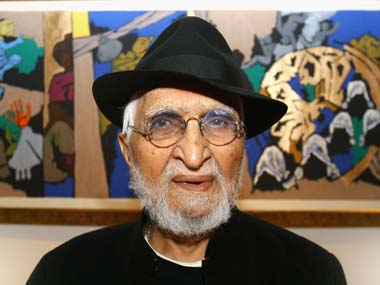When Danish newspaper Jyllands-Posten published 12 cartoons of Prophet Mohammad on 30 September 2005, it claimed it was an attempt to contribute to the debate on the subject of Islam and self-censorship. Dan Brown sought to turn the world of the devout Christian upside down by his interpretation of the myth of the Holy Grail in The Da Vinci Code. Christ married Mary Magdalene and had children and the bloodline had been covered up by the Catholic Church, was the work of fiction’s conspiracy theory. The Christian world was outraged. But Brown stayed unfazed. “Let the biblical scholars and historians battle it out. It’s a book about big ideas…,’’ he said. [caption id=“attachment_23224” align=“alignleft” width=“380” caption=“MF Husain, with all his artistic indiscretions, was in love with India till his last breath. Chris Jackson/Getty”]  [/caption] Painter MF Husain painted Hindu deities and Bharat Mata in the nude — there’s still a debate whether he actually did that deliberately - and the art community jumped to his defence citing an artist’s freedom to express himself. He had to flee India after being hounded by extremist Right-wing elements. He died while in self-imposed exile. Agent provocateurs or freewill messengers? It will always be open to debate. The opinion will depend on which side of the liberal-conservative divide you are. But first the root question. Why must freedom of self-expression trample upon the sensitivities of others? The answer could be ‘why not?’. Disrespect to religions and religious symbols would continue to raise violent passions till there’s an agreement on this. The three instances above represent different shades of the problem - the first is a direct act of provocation against another community; the second a challenge to the faithful within the community; and the third a case of overstepping the limits of propriety. Husain’s case is a curious one. Given his grooming in the multi-cultural ethos of Mumbai and the sheer Indianness of his persona, it’s difficult to put motives to his controversial paintings. Yet they defy logic. He painted Bharat Mata in the nude and named her body parts as different states. The painting was slammed by Hindu groups for hurting the sentiments of Indians. It also showed one of her hands — believed to be a depiction of North Kashmir — blurred to some extent. In his painting ‘Rape of India’, dedicated to the Mumbai blasts, Husain depicted India as a woman being raped, with an animal straddling her and a man pulling her blouse away. In his movie, Meenaxi: A Tale of Three Cities, he put a qawwali which many Muslim organisations thought was unacceptable and an insult to the Quran. It is not easy to associate a man of his character with mischief. Frankly, he was beyond that. The story of his life makes that amply clear. The Danish newspaper case reflected the discomfort with multiculturalism in certain sections of Europe. In Brown’s case it was poking his own with biting fiction and provoking them. In Husain’s case those were never the issues. He moved in an orbit of his own. Probably, it flowed from his personality, which was broad, liberal and passionate at the same time. That he loved India was never in doubt. He always hoped to come back to the country, walk on its streets bare feet and enjoy its sights and sounds again. At 95, it was his lust for life and love for India as well. So let’s forget his artistic indiscretions and be graceful to the icon in his death. He would appreciate that.
It’s unfair to ascribe motives to MF Husain. He might have overstepped that fine line between art and public sensitivity at times, but he was always the embodiment of the multi-cultural ethos of India.
Advertisement
End of Article


)
)
)
)
)
)
)
)
)



